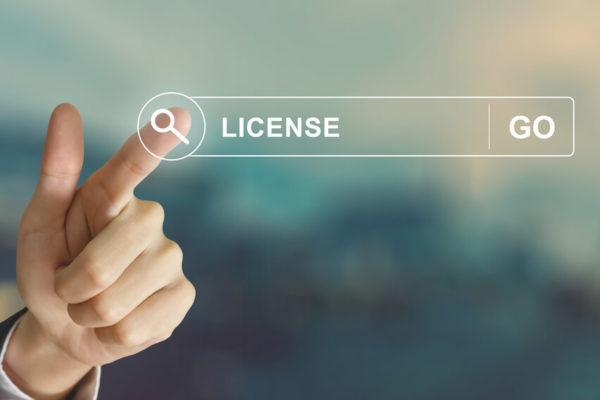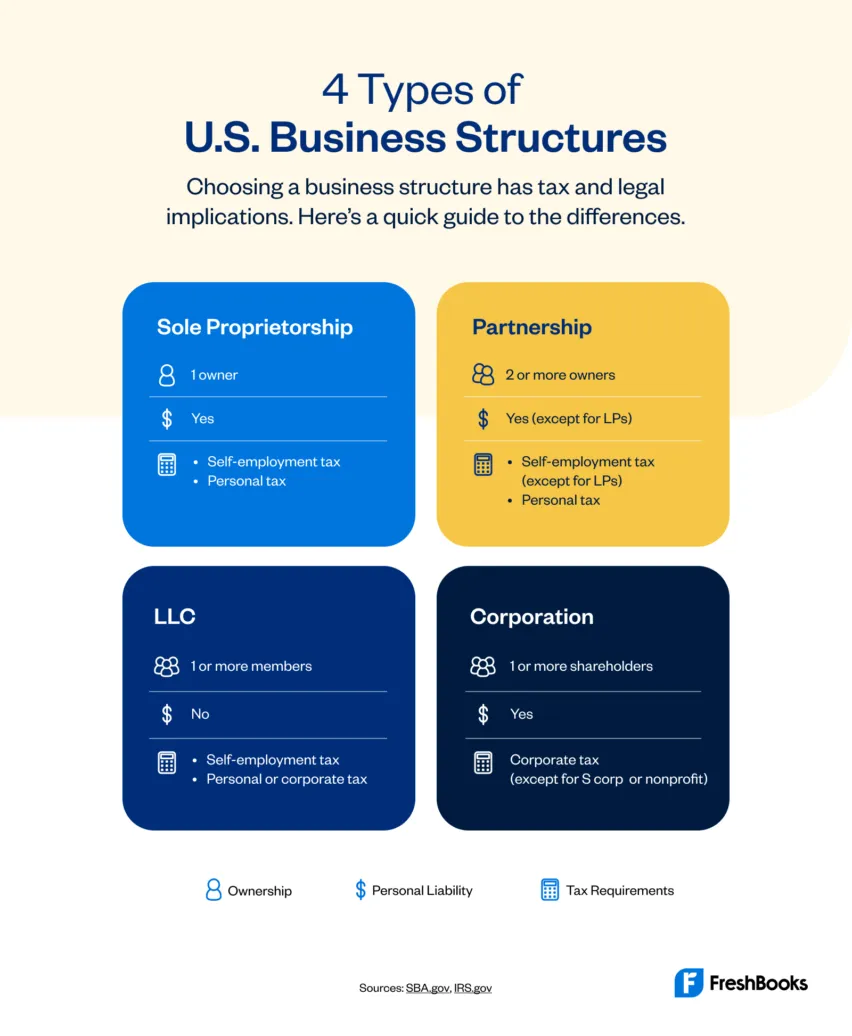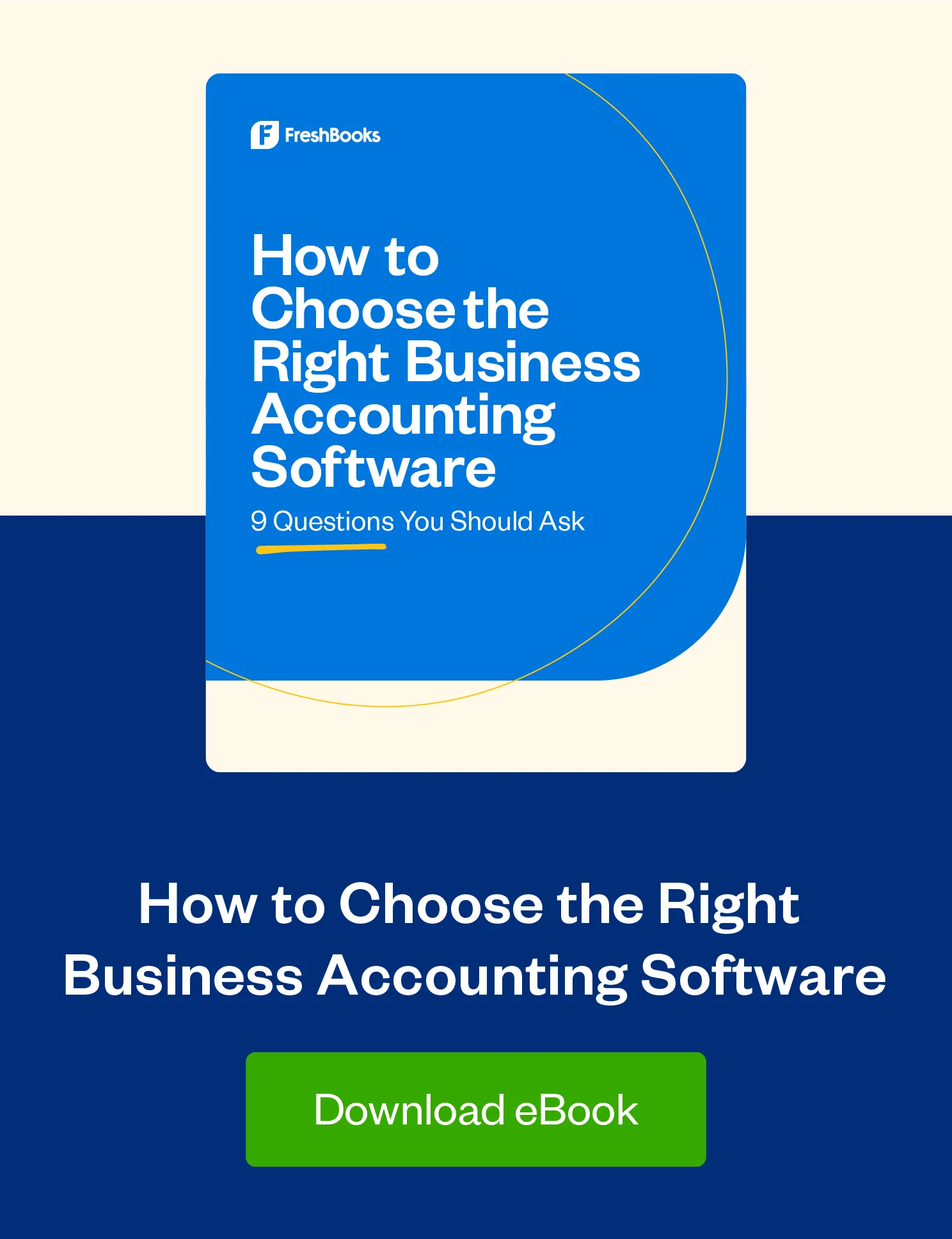Everything you need to know about how to start a business (that actually turns a profit)—including how to tell if you’re ready for the jump to self-employment.

Are you considering giving up your day job—and want to get started on the path to entrepreneurship? Starting your own business can offer many benefits, like more freedom and control. Plus, if you’re willing to put in the work, unlimited potential for expanding your business, connecting with new clients or customers, and generating income.
But starting a business can invite a long list of questions:
- Where do you start?
- What do you need to do to get your business up and running?
- How do you know if and when you’re ready to launch your own company?
Let’s take a look at everything you need to know about how to start a business in the U.S.—as well as how to determine if you’re ready to leave your day job behind in favor of becoming an entrepreneur and small business owner.
Table of Contents
How to Start a Business
Starting a business can feel overwhelming. But it doesn’t have to be! Approaching the process step-by-step can make the idea of launching a business feel more manageable.
So what, exactly, are those steps? Let’s look at what you’ll need to take to get your new business up and running.
1. Come Up With a Business Idea
All businesses start with an idea. So if you’re thinking about starting a business? You’ll need to start with an idea.
If you’ve been thinking about launching your own company, chances are, you already know what kind of business you’d like to start. But if you’re struggling to develop an idea, it’s time to do a little digging—and ask yourself some key questions.
Here’s a breakdown of what you might want to consider asking when developing your business idea.
- What kind of business am I qualified to start? While you don’t need any specific background or experience to start a business, your background and experience can be a great place to generate business ideas. For example, do you have 20 years of experience working in recruiting? Then you might consider starting an HR consulting business. Are you passionate about gardening? Then a landscaping business might be up your alley.
- Do I want to start a product- or service-based business? Starting a product-based business is different from building a business focused on offering services to customers—so when you’re considering business ideas, you’ll want to decide whether you want your business to be product-centric, service-centric, or a combination of both.
- What kind of budget am I working with? Starting a business costs money. But starting certain types of businesses is more expensive than others. For example, starting a contracting company requires a lot of upfront costs, like tools, materials, and a vehicle. On the other end, a freelance writer could get by with just a laptop. So, when generating business ideas, consider what kind of budget you’re working with.
There’s a virtually infinite number of business ideas you could come up with. But before you land on an idea, make sure it’s something you’re excited about—you’ll need that excitement to get you through the highs and lows of business ownership.
2. Make Sure Your Business Idea Is Viable
Once you have a business idea in mind, the next step is making sure that idea is viable.
And that means doing some research.
Here’s a list of things you’ll want to look into during your market research to ensure your business idea is viable before moving forward:
- Demand. It doesn’t matter how great you think your business idea is. If there’s no demand for what you’re selling, your business will be dead on arrival. Before you start a business, conduct market research to understand the need (if any) for your products or services. For example, if you want to launch a new product, you might consider holding focus groups to gauge people’s interest in the product before you start development.
- Competition. Researching the competitive landscape can also give you insights into the viability of your business idea. For example, if there are zero competitors in the space, it could be that there’s no demand in the market. On the flip side, breaking through the clutter and connecting with customers could be more challenging if the market is saturated with similar businesses.
- Startup costs. You’ll also want to research the startup costs of getting your business idea off the ground and ensure those costs align with your budget.
It takes a bit of time and effort, but making sure your idea is viable (and has the potential to be profitable!) before you start a business is an absolute must.
3. Draft a Business Plan
Once you’ve landed on a viable business idea and are ready to move forward, it’s time to draft a business plan.
A business plan acts as a road map: It outlines how you plan to get from where you are now (a person with an idea for a business) to where you want to go (a successful entrepreneur with a profitable business). Your business plan is also essential if you plan to seek funding, either by applying for business loans or pitching your small business to investors.
A solid business plan should include key information about your small business, your goals, and how you plan to make those goals a reality. This includes:
- Executive summary. What would you say if you had 2 minutes to describe your company—your mission, purpose, audience, and goals? That description is what’s known as an executive summary—and you’ll want to include it in your business plan.
- Basic business details. Your business plan should also include the basic details about your business—including your business name, contact details, and a brief bio of yourself and any other business partners.
- Description of products/services. The products and/or services you sell are the core of your business—and, as such, you’ll want to include a detailed description of the products and/or services you plan to offer in your business plan.
- Business goals. Your business plan should also outline your business goals—both in the short-term and the long-term.
- Market analysis. In addition to information about your business, your business plan should also include key information about your market—for example, research about your target customers or analysis of potential competitors.
- Sales and marketing plan. How do you plan to get the word out about your business and connect with customers? How do you plan to drive sales and revenue? Make sure to clearly outline your sales and marketing strategy as part of your business plan.
- Financial projections. No business plan would be complete without financial information, so include all of your financials in your business plan—including budget, operating expenses, external funding sources, and revenue projections.
4. Set Up Your Business
Up until now, your business has been an idea. But the next steps involve turning that idea into an actual business entity—and setting up that entity to conduct business.
There are a few things you’ll need to do to set up your business, including:
Choose a Business Structure
Not all businesses are structured the same way—and before you start conducting business, you’ll need to decide what legal structure works best for you.
There are a few different U.S. business structures you may want to consider for your new business.
- Sole proprietorship. As the name suggests, a sole proprietorship is an unincorporated business owned by a single person. As a sole proprietor, the business owner reports all their business profits and expenses on their individual tax return. Essentially, with a sole proprietorship, there’s no real separation between the business and the individual. For example, suppose the business accrues some debt. In that case, the owner is personally responsible for that debt—and if the business is sued, the owner is responsible for the lawsuit (and any financial obligations that result from the legal proceedings).
- Partnership. A partnership is similar in structure to a sole proprietorship, except a partnership has multiple owners instead of a single owner. Profits are shared between the owners and then reported on each owner’s individual tax returns.
- Corporation. A corporation is a separate legal business entity. Owned by shareholders, corporations limit owners’ personal liability by creating a clear separation between the business and the individual. There are a variety of corporation business structures (e.g., S corporation or C corporation), each of which have different guidelines and regulations.
- Limited liability company (LLC). Like a corporation, a limited liability company (LLC) creates a legal separation between the business owner/owners and the business entity. However, LLCs have fewer restrictions and regulations, and more flexibility come tax time (i.e., LLCs can elect to be taxed like a sole proprietorship/partnership or a corporation).
Register Your Business and Secure an Employer Identification Number
Once you’ve chosen your business structure, you’ll want to register your business.
If you opt to go with a sole proprietorship or partnership business structure, you technically don’t need to register your company. But, if you don’t want your business to bear your name (which is the default), you need to file a DBA (Doing Business As) document that lets you use a fictitious business name instead.
However, if you opt for an LLC or corporation business structure, there are a few steps you’ll need to take to form your business.
If you’re going with an LLC business structure, you’ll need to:
- Choose the state where you want to register your business
- Name your business
- Choose a registered agent (the individual or business entity authorized to receive business-related correspondence and legal documents)
- File your LLC paperwork
- Create an LLC operating agreement
If you’re forming a corporation, you’ll need to:
- Choose the state where you want to register your business
- Name your business
- Choose a registered agent
- Hold an organizational meeting (an initial meeting that determines the organizational aspects of the company, such as appointing officers and approving bylines)
- File formation paperwork
Once you’ve filed your business paperwork, you must apply for your Employer Identification Number (known as an EIN). Think of it like your business’s social security number. It’s also your tax ID number and how the IRS will identify your business when paying taxes. You’ll also need an EIN to open your business bank account (more on that in a moment).
Determine if You Need a Business License and/or Permits
In a nutshell, a business license is a government’s permission to legally conduct business on a local, state, or federal level. The type of licensing depends on the nature of the business entity that applies for it and the location it’s going to operate in.
Licenses also certify that a business is compliant with laws and regulations of a given jurisdiction, and that you have the necessary skills to deliver the actual work.
While specific licensing requirements depend on the location where you want to set up shop, most jurisdictions will require a general business license to get started (which is typically renewed annually), plus a couple more activity-specific documents to go with it. For example, if you live in a state that charges sales tax, you will need to get a state sales tax license (if your business sells taxable goods or services). Or if you’re a plumber, you’ll want to obtain a professional license.
Apart from business licenses, you many also need business permits to regulate things like business activity in residential areas, fire safety, or land use. For example, even if you’re working as a freelance writer from your home, some jurisdictions still require home occupation permits.
Open a Business Bank Account
Once your business is legally registered and you have your Employer Identification Number, you’ll want to open up a business bank account.
Having a business bank account allows you to separate your business assets from your personal assets—making things much smoother (and less stressful!) when tax season rolls around.
Before opening up a business bank account, research and choose a bank that best suits your needs. For example, if convenience is your top priority, you might choose a bank with robust online banking features. But if cost is at the top of your banking priority list, you might go with the bank with the lowest fees.
5. Invest in the Right Accounting Software
Creating the structure to manage your business finances effectively is one of the most important steps in starting a business.
And it starts with investing in the right accounting software.
FreshBooks has everything you need to track, manage, and optimize your business financials, including:
- Invoicing
- Bookkeeping
- Expenses and Receipts
- Payroll
- Online Payments
- Reporting
FreshBooks also features a variety of additional tools that make managing your business even easier, including:
- Proposals
- Estimates
- Project Management
- Time Tracking
Want to experience for yourself how FreshBooks can make managing your finances—and your business—a breeze? Sign up for a free 30-day trial today!
6. Consider Business Insurance
Although business insurance is not required to start a small business, it’s highly recommended for liability purposes. That way, in the event of a worst-case scenario, you can protect yourself, your personal assets, and your livelihood.
Your business structure plays a vital role in considering business insurance. For example, if your small business is set up as a partnership, there’s no separation between your business and personal assets. That means you and your business partner are on the hook if you’re sued.
So what kind of insurance should you get? While there are dozens of types, general liability insurance, which provides basic coverage against accidents, injuries, and negligence claims, is your best bet if you can only afford one type. Now suppose your small business owns or leases any kind of property, such as a building, office, and equipment. In that case, you will need commercial property insurance to cover any losses or damage from events like a fire or vandalism.
7. Create Your Logo and Website
At this point, you’ve taken care of all the behind-the-scenes tasks necessary to launch a business. And now? It’s time to think about the forward-facing elements—specifically, your logo and website.
Your logo is like the face of your business. It’s often the first exposure potential customers have to your brand and business—and you want to make a good first impression. And your website is like your company’s digital real estate. It’s where customers will come to learn more about your business and engage with your products and/or services. They’re both extremely important design assets—and if done correctly, they can help you connect with potential customers and drive business. But if you don’t put the time, energy, and resources into making them professional and on-brand, they could fall flat with your audience (and ultimately hold your business back).
Unless you’re a professional designer, you should consider hiring a professional graphic designer to design your logo and a web designer/developer to create your website. Is it an investment? Yes. But because these two elements are so visible to your audience, it’s vital that they look professional—so it’s an investment worth making.
8. Market Your Business
At this point, your business is set up and ready to go. So the next step? Getting the word out and marketing your business.
When it comes to marketing, there’s no one-size-fits-all solution for every business. The most effective way to market your business will depend on various factors, including your industry, location, budget, and target audience.
That being said, some marketing strategies you may want to consider include the following:
- Local advertising. If your business is centered around local customers (e.g., a coffee shop or landscaping company), local advertising opportunities, like the local newspaper, can be a great way to reach potential customers in the community.
- Local partnerships. Another great way to market a local business is through partnerships with other local companies. Look for businesses that share the same customer base but that aren’t direct competitors—and then propose partnership opportunities as a way to gain exposure to their customers. For example, let’s say you’re opening a new juice shop. You might partner with local fitness studios for pop-up events, set up a juice bar to introduce their members to your product, and then offer discounted juice coupons to get those members into your store location.
- Social media marketing. One of the cardinal rules of marketing is to get customers where they already are—and in today’s digital world, many potential customers are on their preferred social media platform. Start by setting up social media accounts to market your business, whether through social media advertising or more organic engagement (like filming video content for TikTok). This can be an extremely effective way to connect with potential customers and build buzz around your new business.
9. Continue Growing and Expanding Your Business
If you follow the above steps, you will have officially started a business (yay!).
But starting a business is only the beginning. Once your business is up and running, you’ll want to continue to think of ways to grow and expand.
What that growth and expansion look like will vary based on your business. For example, if you’re a solopreneur, you might hire employees and grow your team. If you have a brick-and-mortar business, you might set up an online store and start selling products online. As long as you’re always looking into the future and thinking about how to make your business more successful, consider yourself on a growth path.
How to Tell if You’re Ready to Start a Business
The above process outlines, step-by-step, the logistics of how to start a business.
But understanding how to start a small business isn’t the same as being ready and prepared to start your own business.
Making the decision to start your own business is a big one. So how, exactly, do you know if you’re ready?
Some telltale signs that you may be ready to leave your 9-to-5 behind and jump into the world of entrepreneurship include:
1. You Find Yourself Craving Independence and Autonomy
You may have an excellent boss, but you’re constantly thinking, ‘Let me do it my way!’ This autonomy inspires and excites you more than having the guardrails of somebody else taking that risk and responsibility.
You can see yourself in charge of finding new business, completing projects, and managing day-to-day deadlines, priorities, and paperwork. You know that you would thrive setting your own schedule with your own milestones.
2. You Have the Confidence in Your Unique Skill
You’ve mastered a skill and have been recognized for your work—with awards, mentoring, and even pay raises. Your skills are in high demand, and you have your own unique spin or approach—that little extra something you bring to the table that no other person or business can. You know the work you do lands far above the bar, and you are fiercely determined to showcase your talent to the market.
3. You’re Passionate About Problem-Solving and Understand the Risks
Romantic notions aside, the life of an entrepreneur is beset with obstacles. As a master of your domain, you’ll need to make hard decisions, deal with financial challenges, and manage clients of every kind (and you thought your boss was tough!) The ability to problem-solve (with enthusiasm) is key to running a successful business. Not to mention being excited about learning new things every day. One thing’s for sure: Entrepreneurship isn’t dull.
You also understand there are serious risks to prepare for: You know you need to avoid sacrificing personal savings, relying too heavily on unstable cash flow, overestimating interest in and demand for your business, running into legal problems, or compromising your personal time and health. You recognize the risks as obstacles you must prepare for and mitigate—and plan accordingly.
4. You Have a Well-Thought-Out Business Plan
You’ve done extensive legwork and have a business plan in place. Markets are competitive, and customers must see a robust and differentiated value proposition to buy your services instead of a market full of alternatives.
You’ve become an expert on your target market, know what your competitors are doing, and have developed your services as sought-after solutions.
5. You’ve Got a Side Hustle
You may still be at your day job, but you’ve already taken steps to get your side hustle off the ground—a side hustle you’re ready to turn into a full-time business.
And your online presence already reflects this. You’ve got a great SEO-friendly website and a strong voice on the appropriate social media platforms. You are constantly researching and testing new digital marketing techniques—like blogging, email newsletters, or creating content to connect with your audience.
Your offline presence also reflects this: You have joined professional associations and community groups and made inroads as a potential speaker at trade shows and events. You’re proactively getting your name out there.
Your side hustle has generated a healthy roster of business clients and/or customers—and you feel confident that you can continue to build off that roster and transform your side hustle into a full-fledged business.
6. You Have a Support Network of People
You’ve built a network of people to support you and your business—both personal and professional.
You’ve created a network of business mentors for guidance on identifying and managing new clients and providing advice to help you push through plateaus. These connections can act as your performance reviews and professional development training that you left behind at your former job.
You’ve also got a plan in place should you fall ill and be too sick to work or simply want to take a vacation. You have disability insurance, and you have someone you’ve carefully vetted to sub contract your work to.
From a personal perspective, you have a network of friends and family members that not only support your decision to start a business but will also be there to bounce ideas off of, help you make tough decisions, and soften the blow of small failures.
7. You Have Financial Resources as a Safety Net
One of the main reasons many small businesses fail is that they run out of cash. You’ve planned for your business launch with foresight and due diligence, calculating how much money you need to save (and now have those funds readily available).
8. You Feel Ready
You feel prepared. You feel ready. You know you’ve done the legwork to start a successful business—and now you’re just excited to actually get started.
Use This Guide to Get Your Business off the Ground
Many potential small business owners don’t know how to start a business when it comes to getting everything up and running But ultimately, successfully starting a new business boils down to 2 things—being ready to start and, when you are ready, knowing the right steps to take to get that business going.
And now that you understand both how to assess whether you’re ready to start a business—and the step-by-step process for getting that business set up—all that’s left to do? Check in with yourself and make sure you’re truly ready to become a full-time entrepreneur—and when you are, follow the steps to make your business dreams come true.
This post was updated in March 2023.

Written by Deanna deBara, Freelance Contributor
Posted on June 25, 2018

 How to Decide What U.S. Business Structure Is Right for You
How to Decide What U.S. Business Structure Is Right for You Doing Business As (DBA): What Is It and Why Is It Needed?
Doing Business As (DBA): What Is It and Why Is It Needed? Running a Business in the U.S.? Don’t Forget About a Business License!
Running a Business in the U.S.? Don’t Forget About a Business License!


 Got an Active Side Hustle? Set Yourself Up for Success
Got an Active Side Hustle? Set Yourself Up for Success Think Like a Business Owner, Not an Employee
Think Like a Business Owner, Not an Employee The Founder’s Guide to Startup Funding
The Founder’s Guide to Startup Funding




